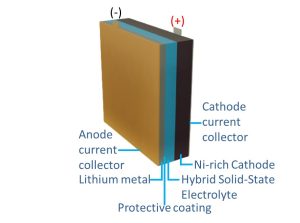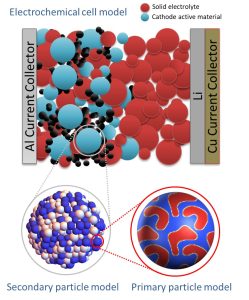Energy generation and storage are key processes in the modern world. Batteries, in particular, have been identified by the European Union (EU) as a key technology to aid the transition towards a carbon neutral economy. Currently, the battery market is dominated by lithium-ion chemistries, however, conventional Li-ion batteries with liquid electrolytes are reaching their performance limits in terms of energy density and are facing safety issues. These challenges can be avoided by new battery generations, such as Solid-State Batteries. Consequently, high-energy-density EU-made Solid-State Batteries make possible creation of a new industry value chain in Europe, hence, significantly contributing to reaching objectives of the Green Deal.

Author: Igor Mele
As an answer to these challenges, ADVAGEN – Development of ADVAnced next GENeration Solid-State batteries for Electromobility Applications funded by the European programme for research and innovation Horizon Europe – will develop a new lithium metal battery cell technology based on a safe, reliable, and high performing hybrid solid-state oxide-sulfide based electrolyte. This innovative hybrid oxide-sulfide ceramic electrolyte will be integrated with a novel Li metal anode and a high nickel rich-based cathode to demonstrate supreme energy density and durability of the battery with an aim to strengthen the EU as a technological and manufacturing leader in batteries as specified in the ERTRAC electrification roadmap and Action Point-7.
The ADVAGEN consortium consists of 14 transdisciplinary partners from 9 countries, with extended experience in the development of battery technology and production, from automotive industry (Toyota Motor Europe), industrial materials producers (Ceramic Powder Technology, Avesta Battery & Energy Engineering, Schott), battery manufacturer (Avesta Battery & Energy Engineering) to R&D centres (Ikerlan, CEA-Commissariat a L’energie Atomique Et Aux Energies Alternative, IREC-Catalunya, Technische Universitaet Braunschweig, CIC energiGUNE, Politecnico di Torino, INEGI, FEV Europe, University of Ljubljana) and specialized consultancies (Euroquality, Techconcepts), covering the complete knowledge and value chain.
The team of researchers from University of Ljubljana, Laboratory for Internal Combustion Engines and Electromobility (LICeM), led by prof. dr. Tomaž Katrašnik, will in this 4 year project lead Work Package 6 – Multiscale Modelling, which is devoted to the development and optimization of all constituent materials of the final solid-state cell. They will focus on innovative models of the oxide-sulfide hybrid electrolyte and its interactions with the nickel rich NMC-based solid state cathode as well as a thin Li metal anode deposited on copper current collectors. Specifically, University of Ljubljana will focus on innovative mesoscopic modelling approaches for analysing interfacial phenomena and the bulk cathode material, modelling of the elementary electrochemical cell and development of a physicochemically consistent equivalent circuit model.

Authors: Igor Mele, Tomaž Katrašnik
Leading role in multiscale modelling confirms high modelling competences of the LICeM, while ADVAGEN project synergistically complements development of advanced modelling tools that LICeM is developing also in other Horizon Europe projects: PULSELiON (PUlsed Laser depoSition tEchnology for soLid State battery manufacturIng supported by digitalization) and NEXTCELL (Towards the next generation of high performance li-ion battery cells), as well as in projects funded by the Austrian Research Promotion Agency: MoSiLIB (Modeling and development of silicon-tin sulfide composite anodes for generation 3b MoSiLIB lithium-ion batteries), and Slovene Research Funding Agency: Advanced multi-scale modelling of NMC cathode materials for enhanced next-generation energy storage systems.